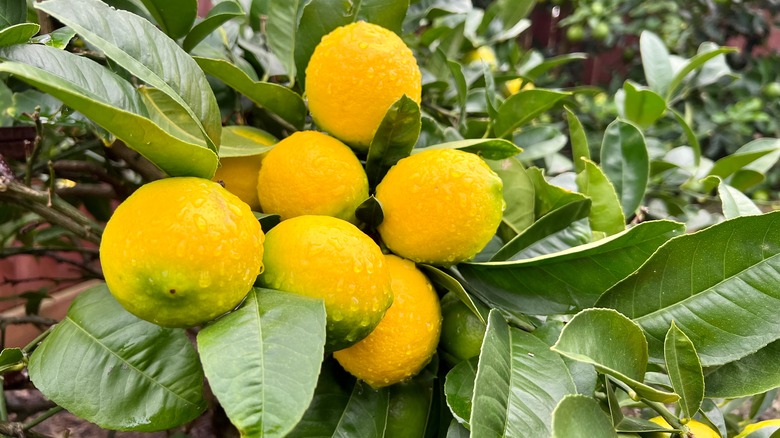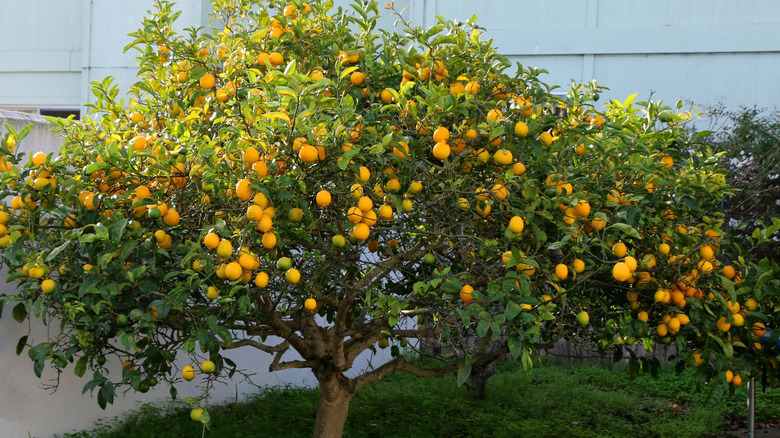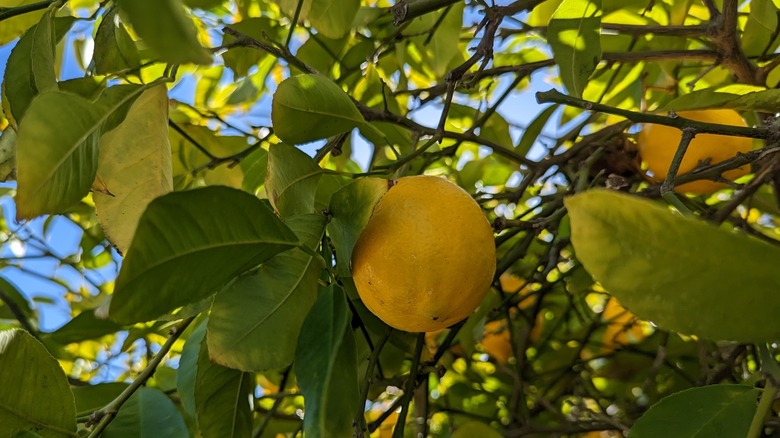The Best Time To Prune A Meyer Lemon Tree So You Don't Lose Its Precious Fruit
Meyer lemon trees make great indoor plants. They're easy to care for and reward you with juicy lemons that are on the sweeter side — perfect for lemonades and desserts. When you're not enjoying your homegrown lemons by the glass, you can enjoy the ornamental value of the plant; those glossy green leaves are gorgeous in their own right, but the bright yellow lemons really add something to your home decor. The beauty of this petite tree makes it important to know when to prune it — doing it at the wrong time can result in you losing out on fruit. If you can wait until the fruit is set, you can be sure not to lose out on any fruit.
Meyer lemons get another point for being easy to maintain. Pruning is virtually optional if you don't mind the tree taking on whatever shape it chooses. If you don't prune for aesthetical purposes, you only need to worry about pruning dead, diseased, or damaged branches, which will be easy to spot whether the plant has set its fruit or not.
Prune when you see fruit on the tree
If you're nervous about losing fruit, wait until you see it. Meyer lemon trees grow fruit on the outer branches, which is usually old growth. Removing these outer branches will cause you to lose fruit. Rather than accidentally lobbing off an entire harvest when the tree is bare, wait until after the flowers have turned into fruit. Then, you can follow the branch to the trunk to be certain that you won't remove any lemons during the pruning process. Meyer lemons typically grow over summer and ripen in fall and winter, though some trees may produce fruit all year long. It may be best to prune as needed rather than try to keep a maintenance schedule so you don't risk accidentally removing production branches.
When pruning for cosmetic purposes, take a good look at your tree and plan ahead. Get an idea of what you want before you start pruning, and identify the branches with lemons. If you want to prune in the off-season while your tree doesn't have any flowers or fruit, aim to remove inner branches and new growth since the older outer branches will have lemons.
How to prune Meyer lemon trees
There are a few things you should look for when pruning. Start with suckers, which are small stems growing at the base of the tree. They use and waste precious nutrients that you should save for the fruit, so it's best to get rid of them as soon as they pop up. Remove dead and diseased branches, as well as anything covered in pests. Repeat this process throughout the year to maintain a healthy tree.
For aesthetical purposes, you can remove branches that cross each other, grow horizontally, or otherwise affect the look of the tree. Cut just above leaf nodes on the branches, avoiding the ones that already have fruit on them. Leave 5 or 6 inches of branch behind so the plant won't be shocked by the pruning process. Only remove up to one-third of the entire tree each year; otherwise, you may hurt the production and growth of the tree.


